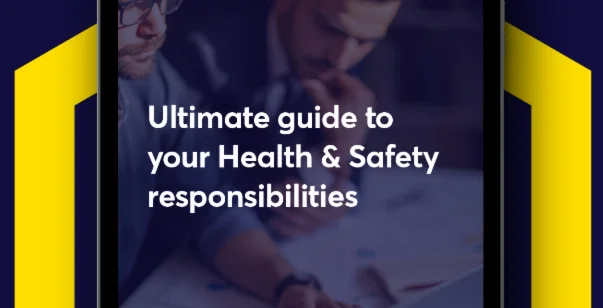A method statement is a document that highlights the steps for carrying out certain tasks. They’re often referred to as ‘safe systems of work’ because they highlight the systems or processes put in place to carry out work safely. They can be written and also include pictures or diagrams to help highlight the risks or processes needed for a certain step of a task and should be easy for workers to understand.
How to use a method statement?
Your work method statement doesn’t need to be too long but it does need to include all the relevant information and needs to communicate it with your workforce so they can carry out the work safely. We’d suggest making the document short and concise so that it’s as easy as possible to follow. You could also use pictures or diagrams to help emphasise certain steps in the process.
Once written, your method statement will need to be shared with all relevant employees so that they have access to the right information about how a task should be carried out.
For further information on writing a method statement, why not check out our dedicated blog post?
Why are method statements used?
Method statements aren’t just there to highlight risks, they play a crucial role in breaking certain tasks down, step by step, to make sure that they can be carried out safely.
They allow employers to set out the correct processes to follow in order to reduce risks. That could be steps on handling a dangerous substance and the required PPE or a scaffold access method statement.
Who is responsible for writing a method statement?
Method statements are essential documents and are often written by a responsible person. As an employer, this responsibility falls to you. The person you choose must be competent and familiar with the working procedures that will be taking place.
The different types of method statements
There are three main types of method statements which are:
- A tender method statement
- A construction method statement
- A safety method statement
Tender method statements
A tender method statement will often be requested as part of a tender application. It gives you the chance to demonstrate your ability to provide a good service. This could include detailing the following:
- Prior experience
- Any accreditations or certifications
- Your staff and training details
- Health and safety policy and procedures
The most important thing is to ensure that the tender method statement shows that you meet the requirements of the job and that you’re the best option there is to deliver the work safely, on time and on budget.
Construction method statements
A construction method statement (CMS) outlines all the processes required to manage a construction project safely and effectively. Depending on the type of job you need to carry out will determine what details need to be included. This could be:
- Site details
- Working location
- Access
- Any vehicles that need to be used
- Storage and distribution of materials and equipment
- On-site staff and supervisors
- Health and safety information
The details in the method statement communicate to your staff exactly what is required for the job to be carried out safely and efficiently.
Safety method statements
Sometimes the Health and Safety requirements of a job can change as the project progresses, so a safety method statement is a live document which can be updated throughout the project. Mainly used by on-site staff, your safety method statement should detail policies and procedures to mitigate any risks your team may encounter, any PPE they will require, and emergency and first aid procedures in case something does go wrong.
What are RAMS? (Risk Assessment Method Statements)
Sometimes you might get asked to show your risk assessment method statement (RAMS), this simply means that you need to show both your risk assessment and method statements. But watch out – risk assessments and method statements aren’t the same things, so make sure you don’t get confused. Let’s explore this in more detail…
The difference between a method statement and a risk assessment?
Risk assessments and method statements both serve the purpose of enhancing Health and Safety across various work sites.
- Risk assessments – A risk assessment identifies and assesses any hazards and risks involved in project work, with control measures suggested to limit any associated risks
- Method statements – The method statement will expand on the findings of the risk assessment, with specific details on the implementation of your measures. This will include how, why and when measures should be taken during the work.
Both documents are equally important. Method statements contain more detail than the risk assessment, expanding on the findings to provide specifics that help your workers understand what’s required.
A method statement template is extremely useful, as it offers a format that addresses everything the risk assessment has uncovered.
When should risk assessments and method statements be used?
Risk assessments should be used for all tasks associated with a job whereas method statements are usually only required for high-risk tasks and give your employees more information about how to carry out the work, step by step.
Risk assessments are used to identify any risks that could occur within a workplace. Often these are obvious, such as using knives if you work as a chef in a kitchen. The risk assessment will outline the probability of each risk, the severity that could be caused if an accident was to happen and what the employer is doing to reduce or remove those risks.
Method statements are commonly used within the construction industry but should be used in any setting where workers are exposed to risks. This can include as dangerous machinery and/or substances, or being required to work at height.
They should be seen as a step-by-step guide or set of instructions on how a task should be carried out. Method statements go into more detail about the measures put in place to reduce or remove risks. This can include detail on how specific activities should be carried out — describing control measures and safety precautions and how these can be implemented/what control equipment should be used.
Whilst risk assessments will be used for all tasks that your employees will face, method statements are often written for specific, high-risk activities. For example, working at height, using dangerous equipment or servicing machinery.
These tasks are broken down into stages, with hazards highlighted and control measures are then included for each step so that they can be easily followed.
Check out our method statement templates
Need support with putting your method statements together? Well, we’ve got a huge variety of templates to help you. We offer blank method statement templates that can be tailored to a variety of tasks, as well as method statements that have been tailored to the processes of specific tasks, to help you save time and make sure that you’re following the correct processes.
You can browse our full range of method statements here.
Need extra support?
With decades of HR and Health & Safety experience, our experts have supported over 8000 clients nationwide with getting their policies, procedures, and overall compliance in check.
Not only can we provide you with a whole host of free Health & Safety templates, but our experts can actually complete your method statement documents for you!
To find out more, just get in touch with our team by calling 0114 493 2223 or fill out our call-back form, and we’ll offer any advice and guidance you need.
You can also use our free method statement template to help set you off on the right track. Check it out here.








